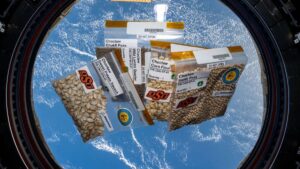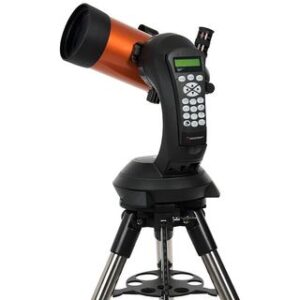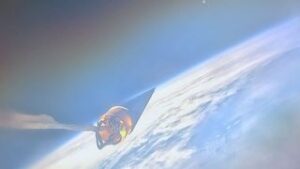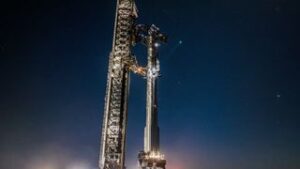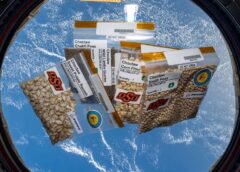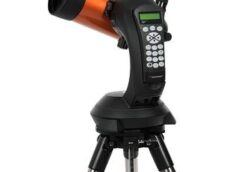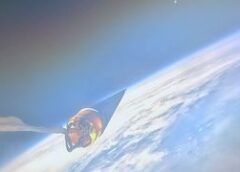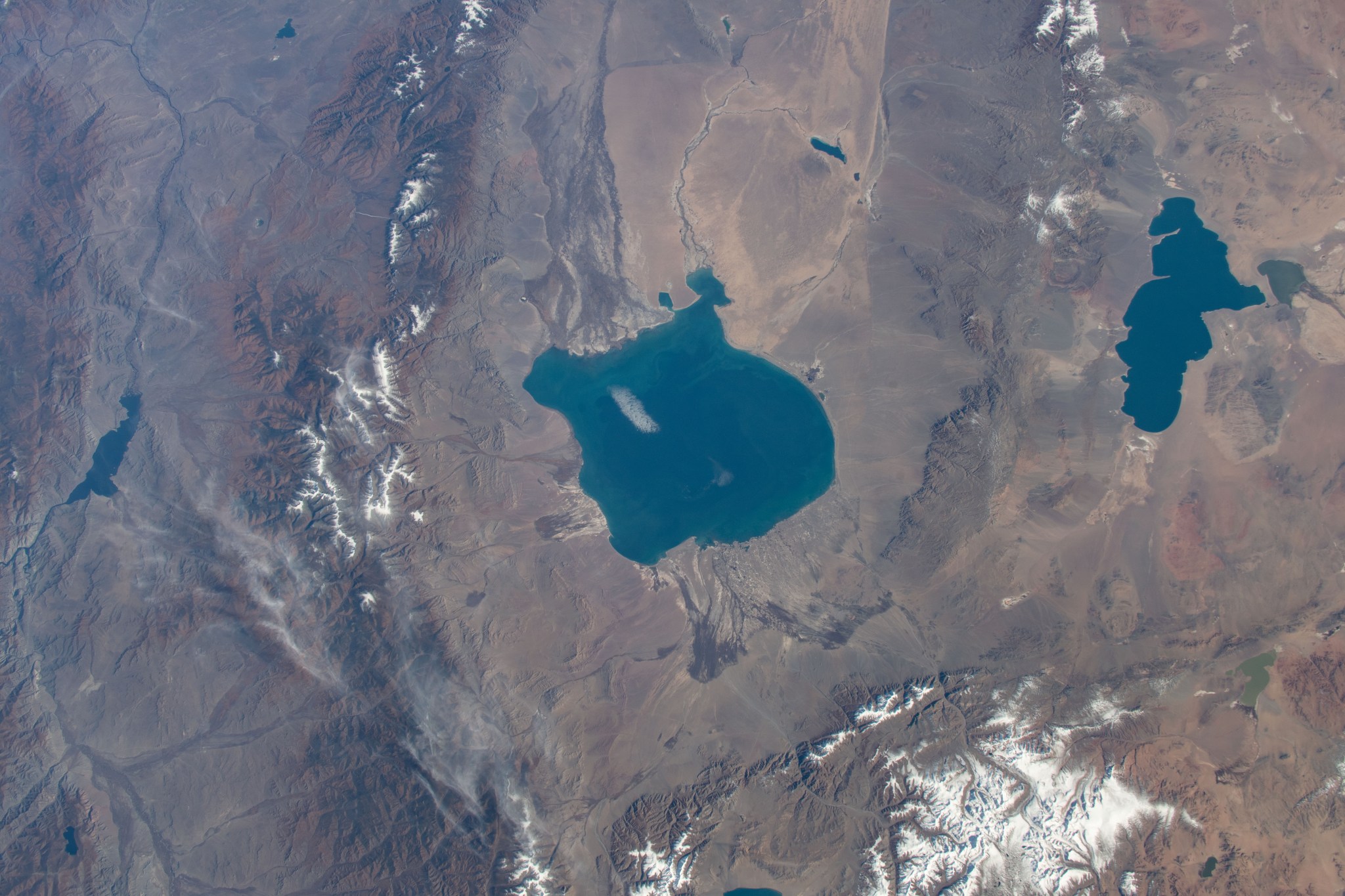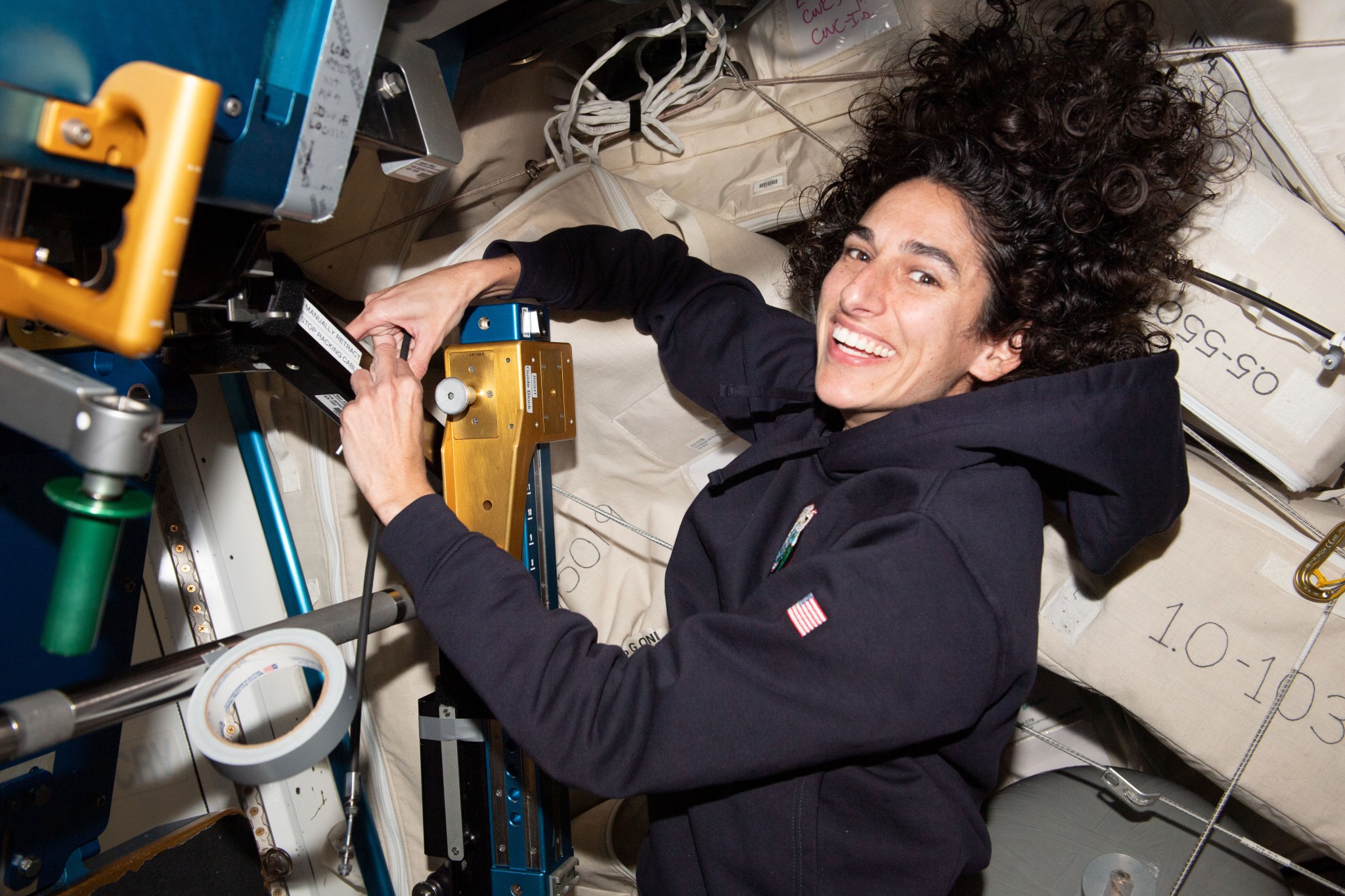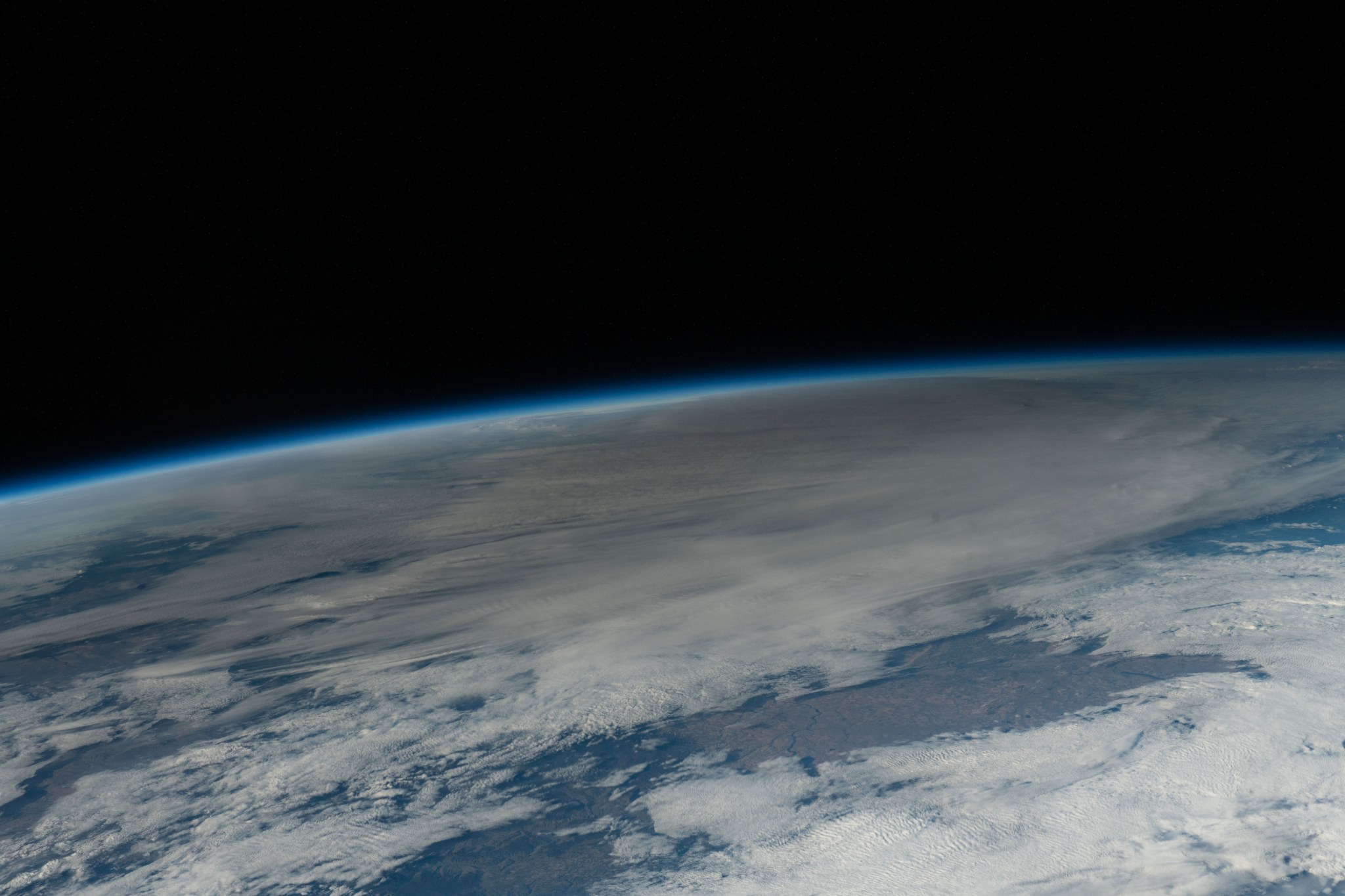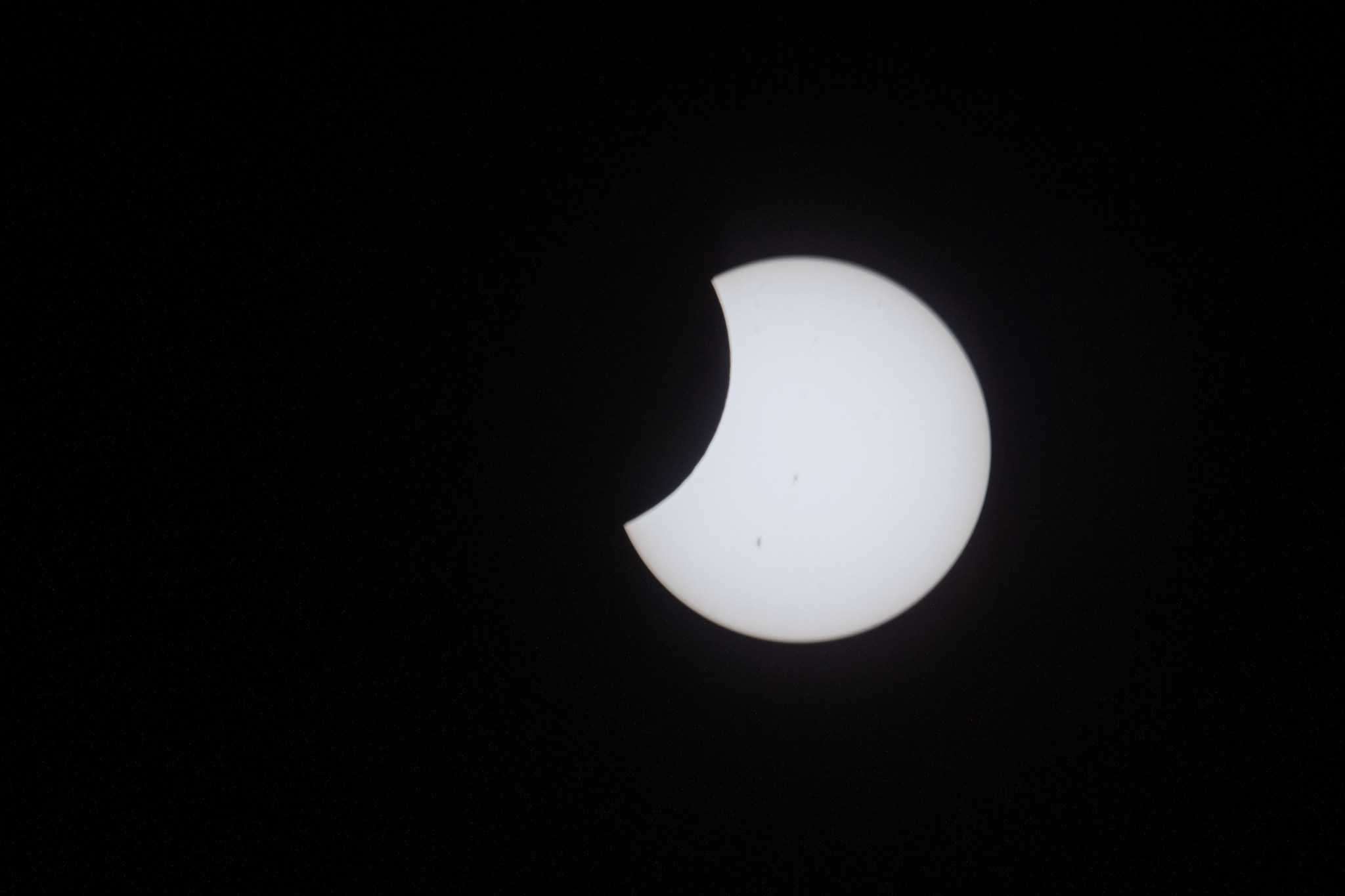iss070e003079 (Oct. 12, 2023) — As the International Space Station orbited 260 miles above, two high saline lakes Uvs (left) and Khyargas (right) located in the Northwestern region of Mongolia were photographed. Both basins are nestled amongst mountain regions home to many different ecosystems.
Read MoreNASA Astronaut Loral O’Hara After First Microgravity Haircut
iss070e000668 (Sept. 30, 2023) — NASA astronaut and Expedition 70 Flight Engineer Loral O’Hara poses for a photo after receiving her first haircut in microgravity. NASA
Read MoreNASA Astronaut Jasmin Moghbeli Fixes Cables on ARED
iss070e001602 (Oct. 2, 2023) — NASA astronaut and Expedition 70 Flight Engineer Jasmin Moghbeli works with the Advanced Resistive Exercise Device, or ARED, removing and replacing cables. The device uses adjustable resistive mechanisms to provide crew members a weight load while exercising to maintain muscle strength and mass in microgravity. NASA
Read MoreBaja California Sur on the Pacific Ocean
iss070e003846 (Oct. 14, 2023) — The north coast of the Mexican state of Baja California Sur on the Pacific Ocean is pictured from the International Space Station as it orbited 258 miles above. NASA
Read MoreThe Moon’s shadow darkens a portion of the Earth’s surface
iss070e003785 (Oct. 14, 2023) — The Moon passes in front of the sun casting its shadow, or umbra, and darkening a portion of the Earth’s surface during the annular solar eclipse. The International Space Station was soaring 260 miles above the U.S.-Canadian border as this picture was taken pointing southward toward Texas. NASA
Read MoreThe Moon passes in front of the sun
iss070e003409 (Oct. 14, 2023) — The Moon passes in front of the sun during the annular solar eclipse in this photograph taken by Expedition 70 Flight Engineer Jasmin Moghbeli aboard the International Space Station. NASA
Read MoreFuture Mars astronauts may chomp on Earth’s tiniest flowering plant to survive
The smallest flowering plant on Earth could have a huge role to play in humanity’s exploration of space. Watermeal, or Wolffia, is found floating on the surfaces of lakes and ponds in Asia, gathering in pinhead-sized clumps on our planet. When carried to space, watermeal could provide both food and oxygen for astronauts. As humanity prepares for the next era of human-crewed space exploration, which will focus on longer missions and sojourns to the moon’s surface (and even Mars’), sustainability is key. That means a small sort of foodstuff that…
Read MoreWhat the ‘ring of fire’ eclipse looked like from the home of ancient solar astronomy
CHACO CANYON, New Mexico — Solar eclipses occur in patterns that far outlast a single human life, but just occasionally it’s possible to see them echo through deep time. Such a rare occasion was possible on Saturday, Oct. 14 at precisely 10:34 a.m. MDT when a “ring of fire” appeared in the sky for 4 minutes 48 seconds above Chaco Culture National Park in New Mexico. It hung over the ancient kiva — great houses — of the ancient Puebelon people, for whom Chaco Canyon was a center between AD…
Read MorePsyche Launch
A SpaceX Falcon Heavy rocket with the Psyche spacecraft onboard is launched from Launch Complex 39A, Friday, Oct. 13, 2023, at NASA’s Kennedy Space Center in Florida. NASA’s Psyche spacecraft will travel to a metal-rich asteroid by the same name orbiting the Sun between Mars and Jupiter to study its composition. The spacecraft also carries the agency’s Deep Space Optical Communications technology demonstration, which will test laser communications beyond the Moon.
Read MoreScientists want to make moon roads by blasting lunar soil with sunlight
Lunar dust could one day be fused into paved roads and landing pads on the moon using concentrated sunlight from huge lenses, scientists believe, thanks to experiments on Earth that used lasers to blast simulated lunar soil. Dust on the moon is largely made of lunar volcanic rock that cosmic impacts and radiation have blasted to a powder over millions of years. And though the moon typically appears white to us because of reflected sunlight, lunar soil is actually mostly dark gray. Whereas Earth has wind and water to erode…
Read More